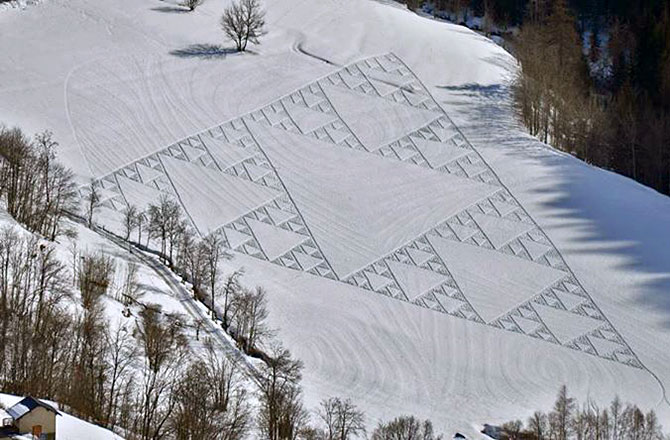
In the wake of snowstorm Jonas, the east coast of the US has been consumed with snow math – counting up the number of inches that fell, the miles of roads plowed, and the days of work lost – but that’s basic arithmetic compared to Simon Beck’s advanced snow mathematics.

For more than a decade, Beck has made elaborate designs in snow, mainly in the French Alps, using only snowshoes and a compass. He started out making mandala-like circular shapes, but moved on to much more complex designs over the years. Beck told Discovery News that he started incorporating fractal patterns into his work after reading James Gleick’s book “Chaos: Making a New Science.”
Each image takes him up to 11 hours to make, as he walks 25-30 miles to make a design of about 100 meters square. Beck says that he started making snow art mainly as a form of exercise, but it has now become his life’s work. You can see much more at his website.



